
Do Bees Sleep in Flowers? Some Species Do! (Explained) AnimalKeen
Yes. Bees are known to rob your flowers of their beauty. Sleeping bumblebees or honeybees are the reason behind the unexplained holes in your flowers. Like other insects, bees sleep too and flowers are their bed. And they sleep like a baby, taking on a perfect sleeping posture and restraining any movement. As a bee […]

bees sleeping in flowers
Finally Do Bees Sleep in the Hive? For many years, researchers did not believe that bees sleep. Though it was known that circadian sleep-wake cycles occurred in birds and mammals. This had not been observed in insects. Then in the 1980's a bee researcher named, Walter Kaiser made an exciting discovery.

ITAP of four bees having a nap in the same flower by Martingls . . . . photos amazingworld
English Español Have you ever looked into a flower and discovered a bee just sitting there? What is it doing? Why is it there if it isn't gathering nectar or pollen? Take a closer look — is it actually asleep?!? Female bees retreat to their nests to rest. If they are social bees like honeybees and bumble bees, that nest will be a colony or hive.
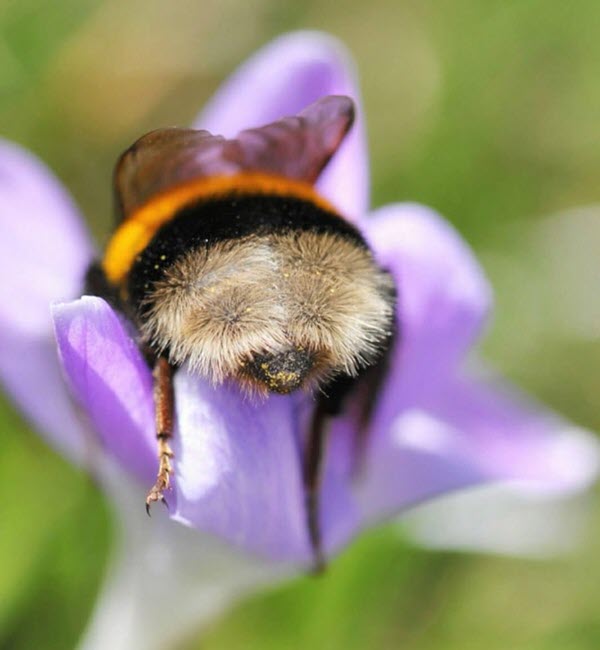
These Exhausted Bumblebees Fell Asleep Inside Flowers With Pollen on Their Butts Inner
Do bees sleep in flowers? It's a charming image, like an illustration in a children's book. But is a flower the best place for a bee to spend the night? In this article, we explore the nightlife of bees, and learn what they do all day that tuckers them out.
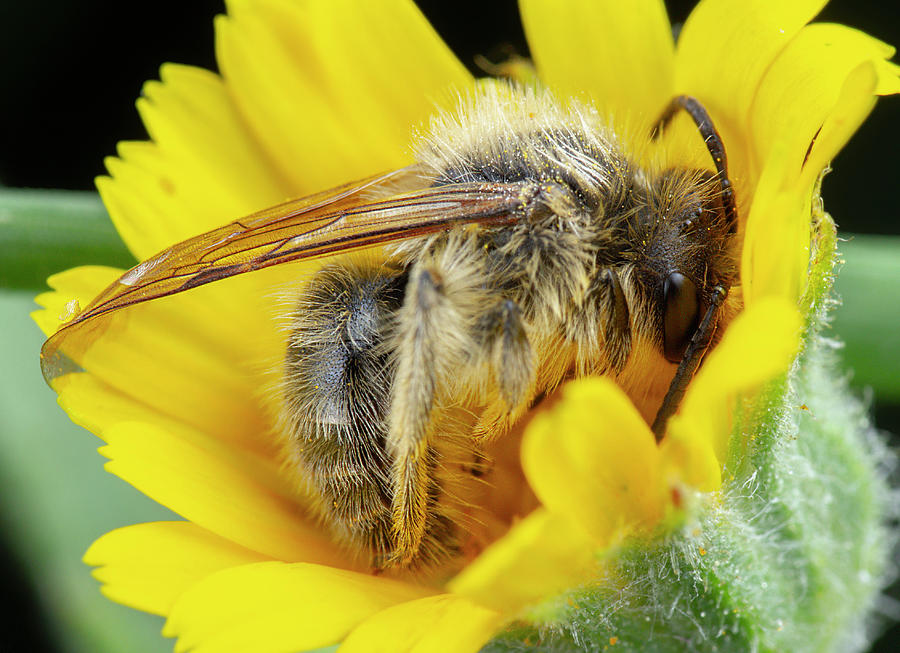
Little Honeybee Sleeping Into Flower Photograph by Cavan Images Fine Art America
Photographer Joe Neely recently captured two bees sleeping in a flower, and it's definitely not something you see every day. He was kind enough to share his images with DIYP, so take a look and prepare to get all mushy. In an interview with Bored Panda, Joe explained that he and his fiancée Niccole went out to find some poppy flowers.

Scientists Find That Bees Aren't Getting Enough Sleep, and a Common Pesticide Is to Blame
Near sunset, the Neelys saw bees enter one flower after another. "They'd just kind of crawl in and plop over," Joe says. And when one more bee alighted and saw all blooms occupied, it converted.
Little Andrena bee sleeping in buttercup flower [OC] pics
(Explained) - AnimalKeen Do Bees Sleep in Flowers? - Some Species Do! (Explained) Bees / By Niels Joensen Bees are constantly on the move; if they aren't moving, they need to sleep, but do they sleep in flowers? Some species of bees are known to sleep in flowers. These are generally wild male bees and not the common honey bee.

Abelhas dormindo de conchinha enchem o mundo de fofura greenMe Fotos de abelhas, Fofura, Animais
Nov 29, 2022 At LearnBees, we suggest products we love and use. If you try them, we may earn money. Learn more. Table of Contents: 01 Do Bees Sleep in Flowers? 02 How Long Do Bees Sleep in Flowers? 03 How Do I Tell if a Bee Is Sleeping or Dead? Do Bees Sleep in Flowers? Yes, bees can be commonly found sleeping in flowers.

Descubren que las abejas duermen en las flores, y es adorable Plumas Atómicas
How often do honey bees sleep in the flowers? - Honey Bee Suite Home » Bee Blog » How often do honey bees sleep in the flowers? 3 min read 1 year ago Although many types of bees sleep in the flowers, it's not a common practice for honey bees. But if you look carefully in early morning, you may find some.

Tired Bumblebees Who Fell Asleep Inside Flowers With Pollen On Their Butts Шмели, Цветы, Шмель
These Adorable Bees Sleep In Flowers And It Is As Precious As You Think Image: Diadasia Bee Straddles Opuntia engelmannii Cactus Flower Carpels by Jessie Eastland - Own work, CC BY-SA 4.0 Rounding out the week, we are sharing a sweet and blissful video of tired little bees relaxing.

Photographer Captured Bees Sleeping In Flower And It’s As Cute As It Sounds
Summing up Do bees sleep? Based on research by Walter Kaiser in 1983, honey bees sleep an average of 5-8 hours at night. Like humans, they follow a similar relaxed, light, and deep sleep pattern. Bees also exhibit a relaxed posture before going into a state of slumber. When a bee sleeps, its body temperature will drop.
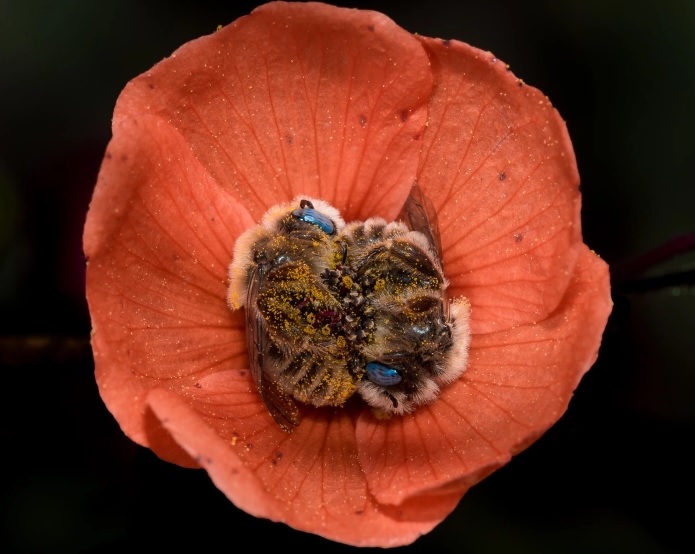
Espectaculares fotos de dos abejas durmiendo en una flor
Male and Female Bees Sleeping In Flowers. In general, the male bees sleep in flowers significantly more compared to the female bees. Male bees from all wild species sleep in flowers often. The bees can be found in groups out at night resting in the same area. Unlike males, most female bees often fly home at the end of the day.
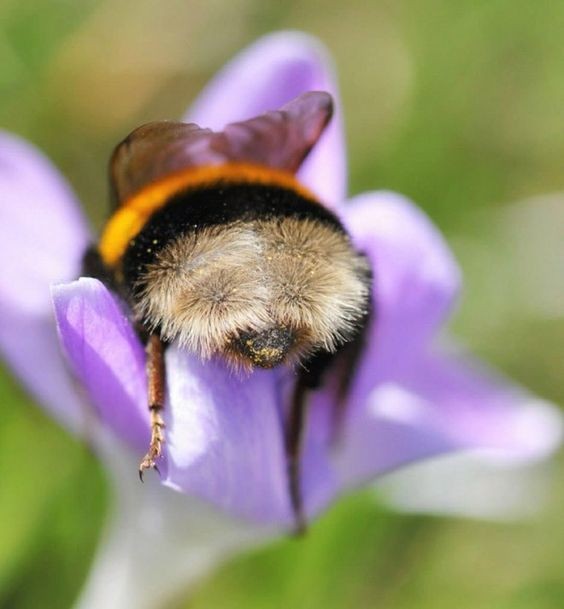
Abelhas dormem em flores de “bumbum” para cima e as fotos são irresistíveis Revista Galileu
Fact #1 Bees require a temperature of 50 degrees Fahrenheit or higher to fly easily without using up all of their nectar stores. But they prefer it hot: 80-90 degrees. On a cool morning I've noticed bumble bees asleep inside a squash blossom, underneath a flower, or generally looking lazy. Now I know why! Fact #2
Photos of Bees Sleeping in a Flower PetaPixel
When a bee is in a deep sleep, their antennae descend, the upper body (chest) falls as well as the top of the abdomen (or tail), and the wings descend on the body! They react less well to harassment, and their body temperature drops. Unlike mammals, bees sleep much deeper before the end of the sleep period.
Photos of Bees Sleeping in a Flower PetaPixel
Yes, bees do sleep. They have periods of rest similar to sleep in humans, which helps them restore their energy and maintain optimal functioning. During the warmer spring and summer seasons, bees are commonly observed hovering around flowers as they collect nectar. However, during the night or throughout the colder winter months their presence.

Pin on BEE Happy
In addition, the bees' sleep patterns can also affect the pollination of flowers. When bees are well-rested, they are more likely to be active during the day and visit more flowers, thus increasing the chances of successful pollination. On the other hand, when bees are sleep-deprived, they are less likely to be active and visit fewer flowers.